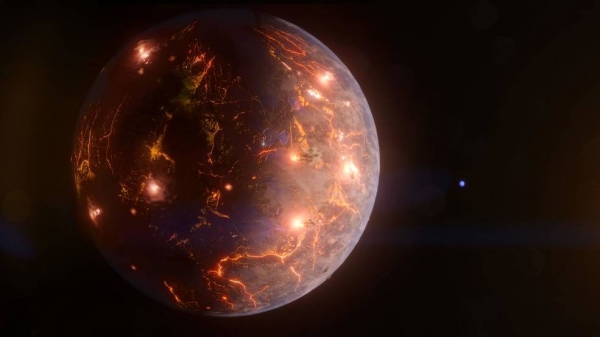Astronomers have discovered an Earth-size exoplanet, or world beyond our solar system, that may be carpeted with volcanoes. Called LP 791-18 d, the planet could undergo volcanic outbursts as often as Jupiter’s moon Io, the most volcanically active body in our solar system.
They found and studied the planet using data from NASA’s TESS (Transiting Exoplanet Survey Satellite) and retired Spitzer Space Telescope, as well as a suite of ground-based observatories.
A paper about the planet – led by Merrin Peterson, a graduate of the Trottier Institute for Research on Exoplanets (iREx) based at the University of Montreal – appears in the May 17 edition of the scientific journal Nature.
“LP 791-18 d is tidally locked, which means the same side constantly faces its star,” said Björn Benneke, a co-author and astronomy professor at iREx who planned and supervised the study. “The day side would probably be too hot for liquid water to exist on the surface. But the amount of volcanic activity we suspect occurs all over the planet could sustain an atmosphere, which may allow water to condense on the night side.”
Read more at NASA
Image: LP 791-18 d, shown here in an artist's concept, is an Earth-size world about 90 light-years away. The gravitational tug from a more massive planet in the system, shown as a blue disk in the background, may result in internal heating and volcanic eruptions – as much as Jupiter’s moon Io, the most geologically active body in the solar system. Astronomers discovered and studied the planet using data from NASA’s Spitzer Space Telescope and TESS (Transiting Exoplanet Survey Satellite) along with many other observatories. (Credits: NASA’s Goddard Space Flight Center/Chris Smith (KRBwyle))


